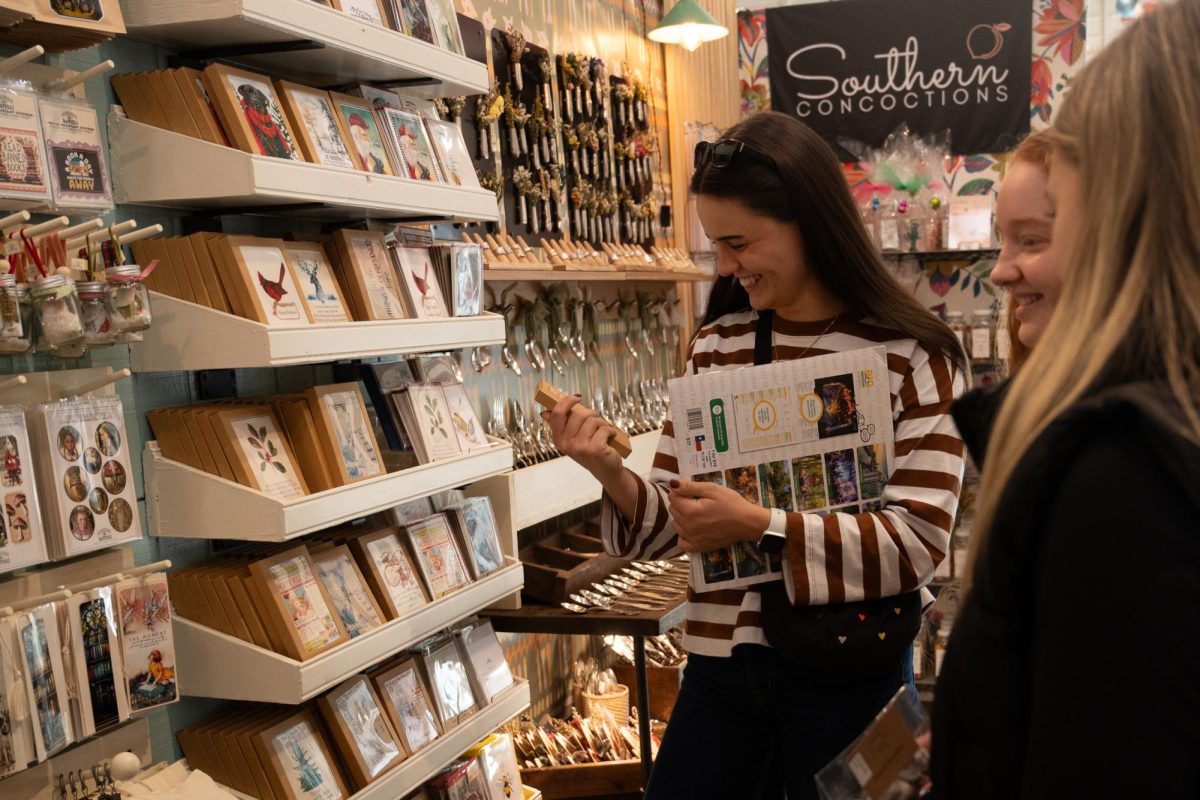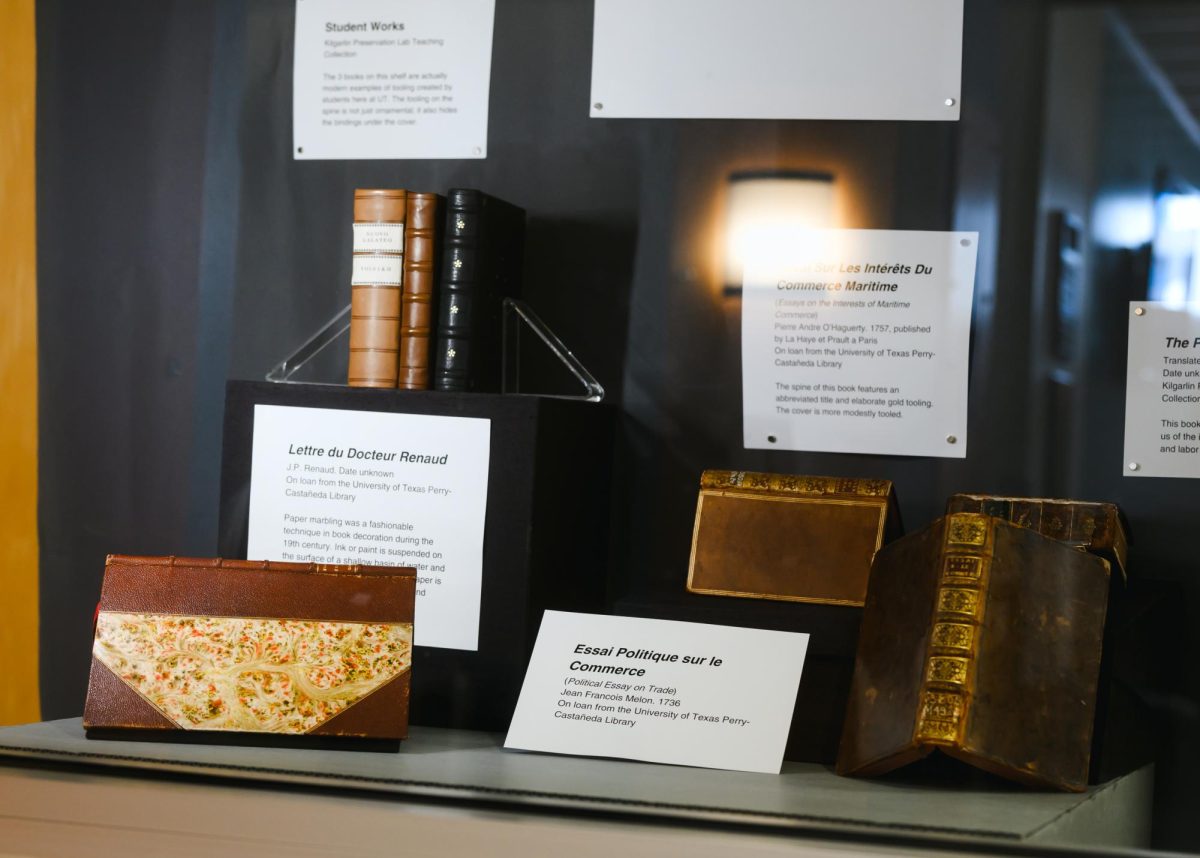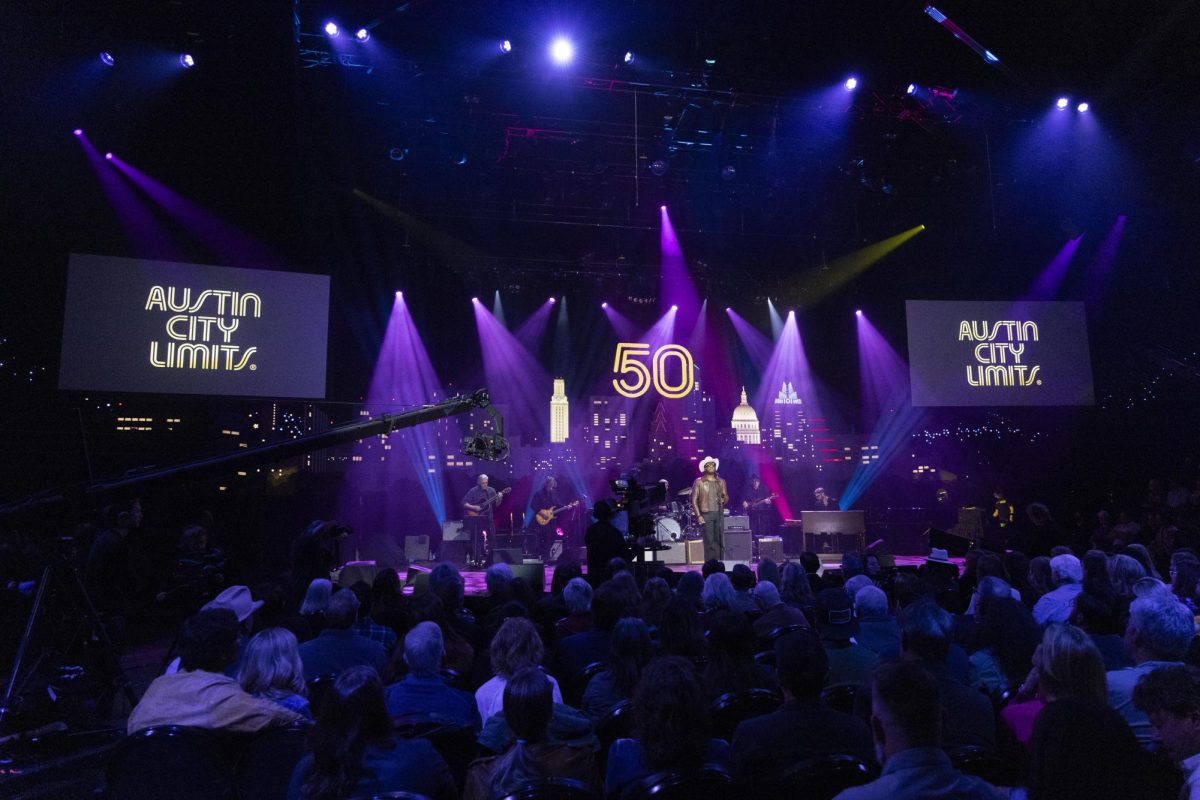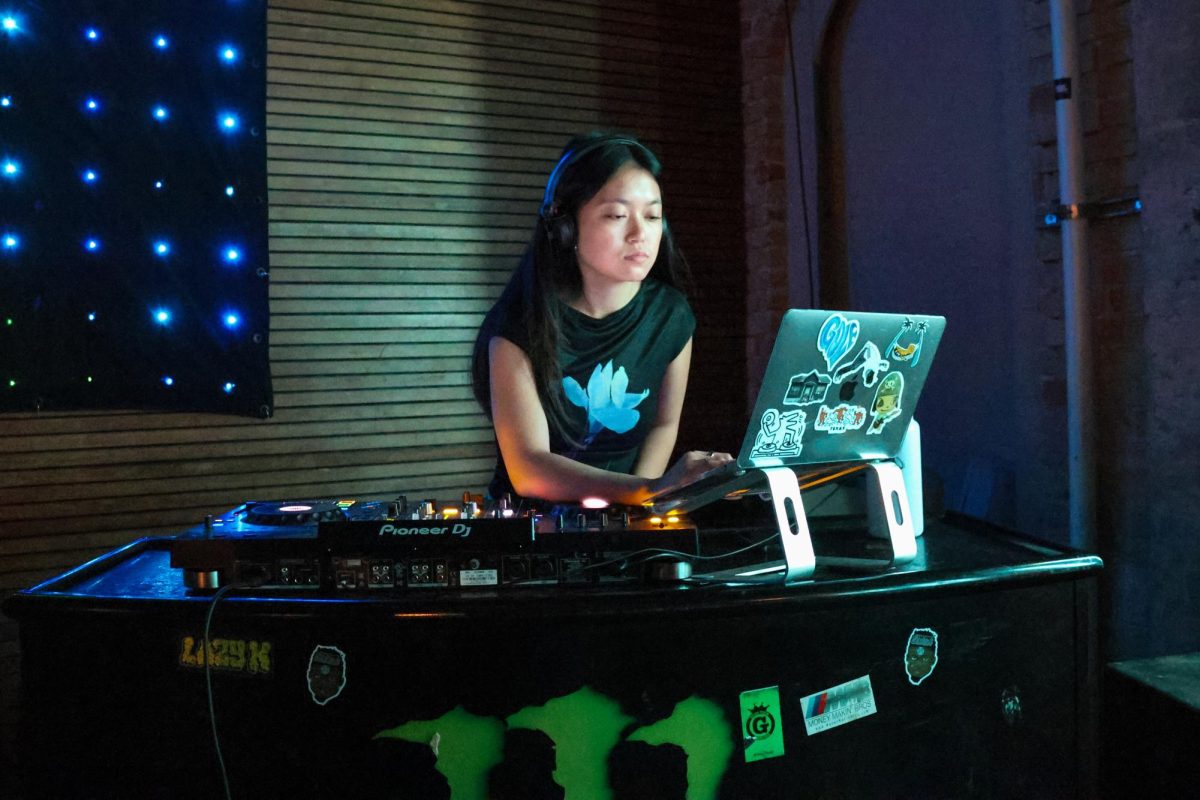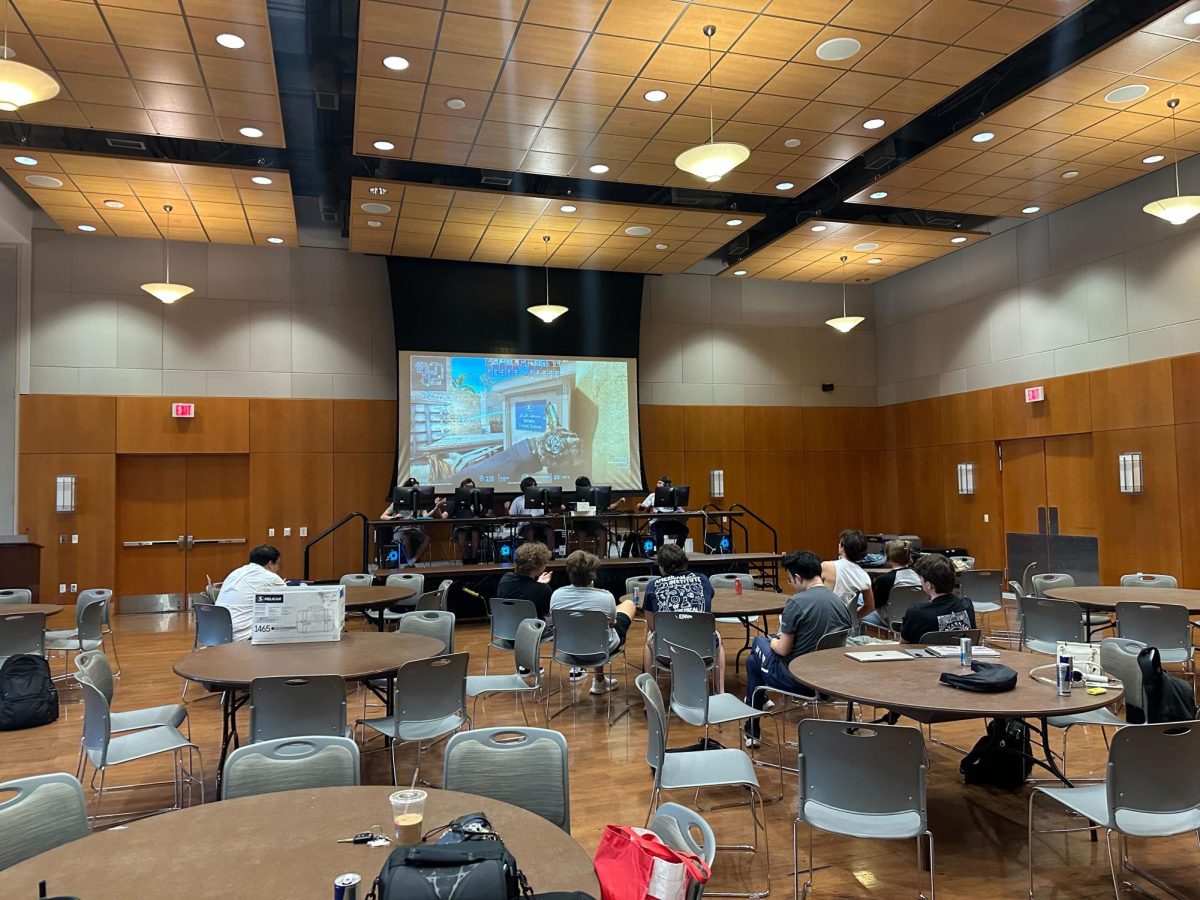Sam Hovland walks through the formerly lived-in rooms of an 1890s Victorian manor where sleek floor-to-ceiling black cases stocked with foreign and domestic wines contrast the hardwood floors of the converted home. Hovland navigates between stacked boxes of wine that form an island between the cases, arranged in a way that makes a charming sort of clutter.
He stops periodically to admire a bottle and explain its origin, unprompted by the information cards that sit beside each shelf. He stops and pulls out a bottle of Coenobium white wine grown by nuns in northern Italy. He takes a few steps and showcases a wine made with grapes from a plot resurrected from ancient Roman times.
A few minutes later his business partner, Matt Miller, arrives. Hovland explains to him that he was in the process of pointing out some of the more obscure wine labels kept in East End Wines.
“All of them,” Miller laughs as he looks around the room.
Miller began as a delivery driver for a Downtown wine shop while pursuing a degree in computer science at UT. He worked his way up through the ranks and eventually began working in wine retail, trained with nothing but books and a healthy appetite for wine. Hovland leaned toward a more formal type of training and received his degree from the International Sommelier Guild and sat on tasting committees for both local restaurants and corporate chains. Unfulfilled by his level of involvement on the tasting committee of a large distributor, Hovland eagerly accepted Miller’s timely business proposition.
Since its opening in April, East End Wines has drawn customers ranging from collectors and connoisseurs to hobbyists looking to rise above the Franzia. Miller, the general manager and owner, found the old Victorian and brought Hovland on board as his wine buyer, setting out with a 20-page list of their initial inventory choices and began tasting. After a summer spent perfecting their stock, Miller and Hovland can both say that they have tried each wine on the shelves in the last six months and can back their choices up with meticulous notes.
Frustrated by working for retail vendors that lacked staff knowledge of the wines they were selling, Hovland and Miller work together to assure that every label measures up to their standards.
“I will never have an instance where I have to tell a customer, ‘Oh, I don’t know about that one,’ or ‘[Miller] picked that one, but I didn’t care for it.’ We won’t have any wine that we won’t wax poetic about or gush about what a great deal it was,” Hovland says.
A look through the selection at East End Wines is sure to turn up many new finds even for the savviest of aficionados. Instead of turning to common labels housed in many corporate chains, East End Wines features an array of wines that you may not come across often, which forces customers loyal to a specific label to venture outside the box.
“Often when people come in they may not know what they’re looking for, but there are so many wines here that can match styles,” Miller says. “If we can get them to try something different, the next time they come back we can try something else, so it’s slowly getting them away from their comfort zone.”
Although East End has enough rarities to bring in collectors, they aim to keep prices low without sacrificing taste. The shop currently has only one bottle that costs more than $100, and the average price for a bottle is $17. Although they appreciate the draw that the shop has to collectors and try to cater to that aspect of the industry, the majority of their wares are aimed at the neighborhood.
“I think people assume that because we’re situated in a Victorian house that they think that we’re selling expensive, boutique wines, and while we are choosing small production and we are choosing them in a very careful way, we also make sure to concentrate on having lots of values and really knew that for people looking for wines to drink every day they’d be in a lower price range,” Hovland says.
While the shop currently has free tastings every Friday, East End Wines is in the process of switching their liquor license to be able to serve and sell bottles and half-bottles for consumption on the premises. Additionally, they would like to host live music events and bring in food vendors to pair with the wines. They are also in the process of beginning a wine education program for both casual consumers and aspiring sommeliers. Even with these pending changes, Hovland and Miller‘s main goal remains a low retail price point and knowledge of each of their products.
“There’s a romance of being an industry that draws people who are really passionate about what they’re into,” Hovland says. “It makes it so there are people who are going to be in the business not for a lot of money, but for the joy of doing it. There’s travel and education, but in the end it’s just drinking wine.”

